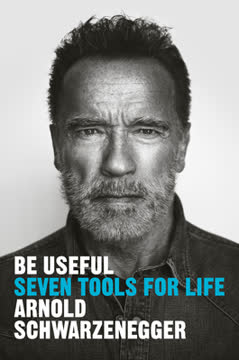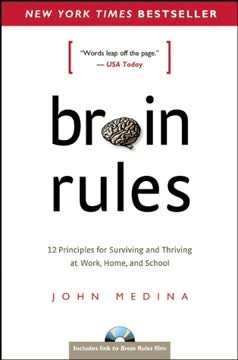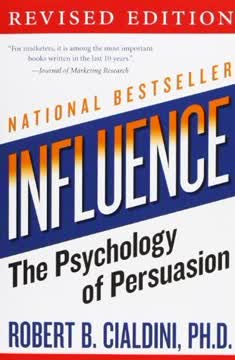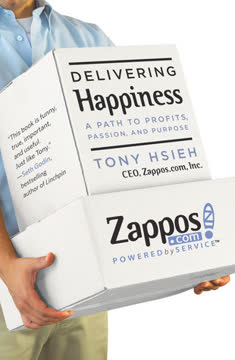Key Takeaways
1. Visual Hammers are More Powerful Than Words
Yet there is a lot of evidence that visuals play a far more important role in marketing than do words.
Emotional impact. Visuals resonate more deeply with consumers because they tap into the right side of the brain, the emotional center. Unlike words, which require processing and interpretation by the left brain, visuals create an immediate, intuitive connection. This emotional power is what makes visuals more memorable and persuasive.
Examples of visual dominance:
- Coca-Cola's contour bottle: Instantly recognizable and associated with the brand's authenticity.
- Nike's Swoosh: Conveys leadership and athleticism without any words.
- Marlboro's cowboy: Projects masculinity and ruggedness, transforming the brand's image.
Global reach. Visuals transcend language barriers, making them particularly effective in global marketing campaigns. A picture truly is worth a thousand words, especially when those words need to be translated into multiple languages. A strong visual hammer can communicate a brand's message across cultures without the risk of misinterpretation.
2. Nail Down Your Verbal Message First
You need two things to build a brand. A visual hammer and a verbal nail. And the nail comes first.
Verbal nail. The verbal nail is the core message you want to hammer into the consumer's mind. It's the single word or concept that defines your brand's position in the market. Without a clear verbal nail, your visual hammer will lack direction and purpose.
Examples of verbal nails:
- BMW: "Driving"
- Volvo: "Safety"
- Marlboro: "Masculinity"
Hammer and nail. The visual hammer reinforces the verbal nail, driving it deeper into the consumer's consciousness. The visual should be carefully chosen to complement and amplify the verbal message, creating a cohesive and memorable brand identity.
3. Simplicity is Key to a Strong Visual Hammer
Simplicity combined with uniqueness allows a visual hammer to be instantly recognizable at a distance.
Instant recognition. A simple, unique visual hammer is instantly recognizable, even from a distance. This is crucial in today's cluttered marketplace, where consumers are bombarded with countless messages. A complex or generic visual will simply get lost in the noise.
Examples of simple, effective visual hammers:
- Target's target: Utterly simple, yet highly distinctive and memorable.
- Mercedes-Benz's Tri-Star: Represents prestige and luxury with its clean, elegant design.
- McDonald's Golden Arches: Visualizes McDonald's leadership in fast food.
Avoid complexity. Resist the urge to create an elaborate or overly detailed visual. Simplicity is key to creating a visual hammer that is easy to remember and associate with your brand.
4. Color Can Be a Powerful Differentiator
Color can be an effective visual hammer, but the problem is, there are very few distinct colors in the spectrum.
Pre-empting a color. If you can pre-empt a specific color in your industry, you can create a powerful visual hammer that instantly differentiates your brand. Think of Tiffany's blue, Kodak's yellow, or UPS's brown.
Examples of color as a visual hammer:
- Tiffany: Blue represents elegance and authenticity.
- Kodak: Yellow communicates leadership in photographic film.
- Mary Kay: Pink Cadillacs create a memorable association with the brand.
Being the opposite. Another effective strategy is to choose a color that is the opposite of what your competitors are using. This can help your brand stand out and capture attention.
5. The Product Itself Can Be the Best Visual Hammer
If you can design your product so that it incorporates a visual hammer, you can have a huge advantage in the marketplace.
Distinctive design. When your product has a distinctive design, it becomes a walking billboard for your brand. This is particularly effective when you are the first in a new category, as the unique design reinforces your leadership position.
Examples of products as visual hammers:
- Rolex watchband: A status symbol that positions the brand as the leader in luxury watches.
- Toyota Prius: Its unique shape makes it instantly recognizable as a hybrid vehicle.
- Life Savers: The candy mint with the hole.
Maintaining consistency. It's crucial to maintain the distinctive design of your product over time. This consistency reinforces the visual hammer and strengthens the association with your brand.
6. Packaging Offers a Prime Opportunity for Visual Impact
Too often package design is delegated to manufacturing experts who crave efficiency, cost and utility.
Beyond functionality. Packaging is more than just a container for your product; it's a prime opportunity to create a visual hammer that grabs attention and reinforces your brand message. Don't let packaging design be an afterthought.
Examples of effective packaging:
- Heinz ketchup bottle: Its unique octagon shape is instantly recognizable.
- L'eggs pantyhose: The plastic-egg package was a killer hammer.
- Absolut vodka bottle: Designed to look like an apothecary jar, setting it apart from other vodka bottles.
Unique shape. A unique shape can make your packaging stand out on the shelf and create a lasting impression on consumers. Think of the Pom Wonderful bottle or the Grolsch beer bottle with the swing-top cap.
7. Action and Demonstration Amplify Visual Effectiveness
There’s no question that visual hammers involving action, movement or demonstration are more effective than static hammers, or still pictures.
Television's power. Television is the ideal medium for showcasing action and demonstration, making it a powerful tool for creating memorable visual hammers. A well-executed TV commercial can leave a lasting impression on viewers.
Examples of action-oriented visual hammers:
- Dove soap: A hand pouring moisturizing lotion into a bar of soap.
- Tropicana: A straw being inserted into an orange.
- Aleve: Comparing two Aleve pills to eight Tylenol pills.
Juxtaposition. Creating visual tension or shock through the juxtaposition of elements can also be highly effective. Think of BMW putting Minis on top of Ford Excursions or Tropicana's "straw in the orange."
8. Founders Can Be Natural Visual Hammers
If you want to make your company famous, we often advise our clients, then you also have to make your chief executive famous too.
Humanizing the brand. A founder can serve as a powerful visual hammer, humanizing the brand and creating a personal connection with consumers. This is particularly effective when the founder embodies the values and personality of the brand.
Examples of founders as visual hammers:
- Henry Ford: His signature is still used as the Ford Motor Company's trademark.
- Jack Daniel: His image and story are integral to the Jack Daniel's brand.
- Colonel Sanders: His white suit and black string tie are instantly recognizable as KFC.
Authenticity. Consumers are drawn to brands that have a genuine story and a human face. A founder can provide that authenticity and help build trust with consumers.
9. Symbols Visualize the Invisible
A visual metaphor is a symbol that can help bring an invisible product to life.
Tangible representation. For intangible products or services, a symbol can provide a tangible representation that consumers can easily grasp. This is particularly important for industries like insurance or finance.
Examples of symbols as visual hammers:
- Travelers' red umbrella: Symbolizes protection and security.
- Prudential's Rock of Gibraltar: Represents strength and stability.
- Pacific Life's humpback whale: Conveys performance, strength, and protection.
Verbal connection. The most effective symbols are those that can be easily verbalized and connected to the brand's message. This creates a cohesive and memorable brand identity.
10. Heritage Builds Authenticity
A “heritage” hammer can create authenticity for your brand and keep it out of the “pretender” category.
Combating "pretender" brands. In a market flooded with generic products, a heritage hammer can set your brand apart and establish its authenticity. Consumers are drawn to brands with a history and a story to tell.
Examples of heritage as a visual hammer:
- Wells Fargo's stagecoach: Symbolizes a company that has been around for more than 150 years.
- Jack Daniel's black label: Conveys the brand's old-fashioned quality and tradition.
- Aunt Jemima: The character creates the perception of a real person and an exceptionally good cook.
Timeless appeal. A heritage hammer can create a sense of timelessness and enduring quality, which can be particularly appealing to consumers in today's fast-paced world.
Last updated:
FAQ
1. What is "Visual Hammer" by Laura Ries about?
- Core Concept: "Visual Hammer" by Laura Ries explores how brands can use powerful visuals—called "visual hammers"—to emotionally anchor their brand message (the "verbal nail") in consumers' minds.
- Visual vs. Verbal: The book argues that while traditional marketing focuses on verbal positioning, visuals are more memorable and emotionally impactful.
- Practical Examples: Ries provides numerous real-world examples (e.g., Coca-Cola’s contour bottle, Nike’s Swoosh) to illustrate how visual hammers work.
- Strategic Framework: The book offers a step-by-step approach to finding, creating, and leveraging visual hammers for brand success.
2. Why should I read "Visual Hammer" by Laura Ries?
- Unlock Brand Power: The book reveals why many brands fail to stand out and how a visual hammer can make a brand unforgettable.
- Actionable Advice: Laura Ries provides practical strategies and frameworks for marketers, entrepreneurs, and business leaders to apply immediately.
- Emotional Branding: It explains the science behind why visuals stick in the mind and how to use this to create emotional connections with customers.
- Competitive Edge: Understanding and applying the visual hammer concept can help brands differentiate themselves in crowded markets.
3. What are the key takeaways from "Visual Hammer" by Laura Ries?
- Visuals Trump Words: Visuals are more memorable and emotionally resonant than words; brands need both, but visuals drive recall.
- Hammer and Nail Principle: A brand needs a strong visual hammer (image) to drive in a verbal nail (message/positioning) into the consumer’s mind.
- Consistency is Crucial: Long-term, consistent use of a visual hammer is more effective than constantly changing slogans or visuals.
- Simplicity and Uniqueness: The most effective visual hammers are simple, unique, and directly tied to the brand’s core message.
4. How does Laura Ries define a "visual hammer" and a "verbal nail" in "Visual Hammer"?
- Visual Hammer: A visual hammer is a distinctive, emotionally powerful image or symbol that reinforces a brand’s positioning and makes it memorable.
- Verbal Nail: The verbal nail is the core message or word the brand wants to own in the consumer’s mind (e.g., BMW’s "driving").
- Relationship: The visual hammer drives the verbal nail into the mind, making the message stick through emotional impact.
- Examples: The Coke bottle (visual hammer) hammers in "the real thing" (verbal nail); Nike’s Swoosh hammers "leadership" and "just do it."
5. What are some of the most effective examples of visual hammers discussed in "Visual Hammer"?
- Coca-Cola’s Contour Bottle: Symbolizes authenticity and "the real thing," making Coke instantly recognizable worldwide.
- Nike’s Swoosh: Represents leadership and athleticism, reinforcing the brand’s position as a sports leader.
- Marlboro Cowboy: Embodies masculinity, making Marlboro the world’s best-selling cigarette.
- Corona’s Lime: The lime on the bottle visually differentiates Corona and hammers in its unique, refreshing image.
6. Why are visuals more powerful than words in branding, according to "Visual Hammer"?
- Brain Science: Visuals engage the right hemisphere of the brain, which processes images and emotions, while words engage the left, which is logical and sequential.
- Emotional Impact: Visuals evoke stronger emotional responses, which are key to memory retention.
- Cross-Cultural Power: Visuals can transcend language barriers, making them effective in global branding.
- Memory Retention: People remember images far better than slogans or taglines, as demonstrated by psychological studies cited in the book.
7. What are the main types of visual hammers described in "Visual Hammer" by Laura Ries?
- Shape-Based Hammers: Unique product or logo shapes (e.g., McDonald’s Golden Arches, Mercedes’ Tri-Star).
- Color Hammers: Distinctive use of color (e.g., Tiffany blue, UPS brown, Campbell’s red-and-white).
- Product/Package Hammers: Unique product or packaging design (e.g., Absolut bottle, L’eggs egg packaging).
- Action/Demonstration Hammers: Visuals showing action or use (e.g., Dove’s lotion poured into soap).
- Founder/Celebrity/Animal/Symbol Hammers: Use of founders, celebrities, animals, or symbols as brand icons (e.g., Colonel Sanders, Geico Gecko, Travelers’ red umbrella).
8. How does "Visual Hammer" by Laura Ries advise brands to create or find their own visual hammer?
- Start with the Nail: First, define the core verbal message or positioning you want to own.
- Seek Simplicity and Uniqueness: Look for a simple, unique visual that can symbolize and reinforce your verbal nail.
- Embed in Product or Package: If possible, design the product or packaging itself to be the visual hammer.
- Test for Emotional Impact: Choose visuals that evoke emotion and are instantly recognizable.
- Consistency Over Time: Use the visual hammer consistently across all touchpoints for maximum effect.
9. What are common mistakes brands make with visual hammers, according to "Visual Hammer"?
- Confusing Trademarks with Hammers: Many brands mistake generic logos or trademarks for true visual hammers, which lack emotional or strategic impact.
- Changing Visuals Too Often: Frequent changes to visuals or slogans dilute brand memory and effectiveness.
- Overcomplicating the Visual: Complex or abstract visuals are less memorable and harder to associate with the brand.
- Lack of Connection: Using visuals that don’t reinforce the verbal nail or brand positioning leads to confusion and weakens the brand.
10. How does "Visual Hammer" by Laura Ries address the use of color, shape, and packaging in branding?
- Color as Differentiator: Pre-empting a color (e.g., Tiffany blue, Kodak yellow) can make a brand instantly recognizable and emotionally resonant.
- Shape Matters: Unique shapes (e.g., Coke bottle, Cheerios’ hole) help brands stand out and become memorable.
- Packaging as Hammer: Innovative packaging (e.g., L’eggs egg, Absolut bottle) can serve as a powerful visual hammer, especially when the product itself can’t be differentiated.
- Consistency is Key: Consistent use of color, shape, and packaging reinforces the brand’s identity and aids recall.
11. What is the "hammer and nail" strategy for brand building in "Visual Hammer" by Laura Ries?
- Nail First, Hammer Second: Define the narrow, specific verbal nail (message/position) you want to own before creating the visual hammer.
- Visual Drives the Message: The visual hammer’s role is to emotionally drive the verbal nail into the consumer’s mind.
- Repetition and Consistency: Repeated, long-term use of the same hammer and nail combination builds strong brand associations.
- Avoid Abstract Nails: Abstract or broad verbal nails are hard to visualize and less effective; focus on concrete, visualizable concepts.
12. What are the best quotes from "Visual Hammer" by Laura Ries and what do they mean?
- "A visual hammer is the best, most-effective, most convincing way to get inside a consumer’s mind."
- Emphasizes the central thesis that visuals are the most powerful tool for brand recall and emotional connection.
- "The nail is more important, but the hammer is more powerful."
- Highlights the interplay: the message (nail) is the goal, but the visual (hammer) is what makes it stick.
- "Simplicity combined with uniqueness allows a visual hammer to be instantly recognizable at a distance."
- Stresses the importance of simple, unique visuals for maximum impact.
- "Emotion is the glue that sticks a memory in the mind."
- Underlines why visuals, which evoke emotion, are more memorable than words.
- "For want of a hammer, the nail was lost. For want of a nail, the campaign was lost. For want of a campaign, the brand was lost. For want of a brand, the company was lost."
- A poetic summary of the book’s message: without a visual hammer, even the best message can fail, leading to brand and business failure.
Review Summary
Visual Hammer receives mixed reviews, with an average rating of 3.86 out of 5. Readers appreciate the book's insights on brand visualization and marketing strategies, particularly its focus on the importance of visual elements in branding. Many find the examples and case studies helpful. However, some criticize the book for being shallow, lacking depth in explanations, and containing occasional factual errors. Several reviewers note that while the core concept is simple, its application in marketing is valuable. The book is recommended for marketing professionals and those interested in brand management.
Similar Books







Download PDF
Download EPUB
.epub digital book format is ideal for reading ebooks on phones, tablets, and e-readers.




